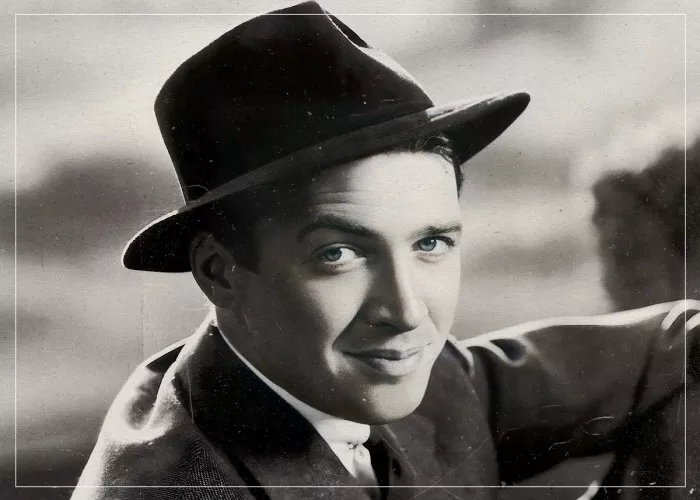James Stewart, born on May 20, 1908, in Indiana, Pennsylvania, was a beloved American actor whose career spanned over five decades and left an indelible mark on the world of cinema. Known for his distinctive drawl, Everyman persona, and wide range of roles, Stewart became one of the most iconic and respected actors in Hollywood history. From his early days as a leading man in classic Hollywood to his later roles in acclaimed films, Stewart’s talent, versatility, and charm captivated audiences and critics alike.
Early Life and Career Beginnings:
James Stewart grew up in a close-knit family and developed a love for acting and performance at an early age. After attending Princeton University and graduating with a degree in architecture, Stewart pursued his passion for acting and moved to New York City to pursue a career on stage. His breakthrough came when he was discovered by director Frank Borzage, who cast him in the 1935 film “The Murder Man.” Stewart’s natural talent and charisma caught the attention of Hollywood, and he soon signed a contract with MGM.
Rise to Stardom:
In the late 1930s and early 1940s, James Stewart rose to prominence as one of Hollywood’s most bankable leading men. His boyish charm, Everyman appeal, and ability to convey vulnerability endeared him to audiences and made him a favorite of directors such as Frank Capra and Alfred Hitchcock. Stewart’s performances in films such as “Mr. Smith Goes to Washington” (1939) and “It’s a Wonderful Life” (1946) solidified his status as a Hollywood star and earned him critical acclaim.
Collaboration with Frank Capra:
One of the defining partnerships of James Stewart’s career was his collaboration with director Frank Capra, with whom he made several classic films that are still beloved today. In “Mr. Smith Goes to Washington,” Stewart played the idealistic young senator Jefferson Smith, whose integrity is tested in the corrupt world of politics. The film’s message of hope and perseverance struck a chord with audiences and earned Stewart his first Academy Award nomination for Best Actor.
World War II Service:
During World War II, James Stewart put his acting career on hold to serve his country as a pilot in the United States Army Air Forces. He flew numerous combat missions over Europe, rising to the rank of colonel and earning several prestigious military honors, including the Distinguished Flying Cross and the Croix de Guerre. Stewart’s wartime service earned him the respect and admiration of his fellow servicemen and cemented his reputation as a true American hero.
Post-war Career:
After the war, James Stewart returned to Hollywood and resumed his acting career with renewed vigor. He continued to collaborate with esteemed directors such as Alfred Hitchcock, with whom he made several classic films, including “Rear Window” (1954) and “Vertigo” (1958). Stewart’s performances in these films showcased his versatility as an actor and solidified his reputation as one of the greatest leading men of his generation.
Late Career and Legacy:
In the 1960s and beyond, James Stewart continued to work steadily in film and television, earning acclaim for his performances in movies such as “The Man Who Shot Liberty Valance” (1962) and “Anatomy of a Murder” (1959). He also transitioned to television, starring in the popular series “The Jimmy Stewart Show” in the 1970s. Despite his advancing age, Stewart remained active in the entertainment industry until his retirement in the 1990s.
Personal Life and Philanthropy:
Outside of his acting career, James Stewart was known for his humble demeanor, strong moral values, and commitment to philanthropy. He was a devoted family man and a loyal friend, known for his generosity and kindness towards others. Stewart was also actively involved in charitable causes, supporting organizations such as the March of Dimes and the Boy Scouts of America. His philanthropic efforts earned him widespread admiration and respect from his peers and the public alike.
Awards and Honors:
Throughout his illustrious career, James Stewart received numerous awards and honors for his contributions to the entertainment industry. He won two Academy Awards for Best Actor, for his performances in “The Philadelphia Story” (1940) and “Anatomy of a Murder” (1959), and received five additional nominations. Stewart was also honored with a Lifetime Achievement Award from the American Film Institute and a Presidential Medal of Freedom for his service during World War II.
Conclusion:
James Stewart’s legacy as one of Hollywood’s greatest actors is indisputable, with his timeless performances continuing to resonate with audiences around the world. From his iconic roles in classic films to his dedication to philanthropy and public service, Stewart embodied the values of integrity, courage, and compassion both on and off the screen. His enduring legacy as a Hollywood legend and American icon will continue to inspire generations of actors and film lovers for years to come.
Related Topics:

